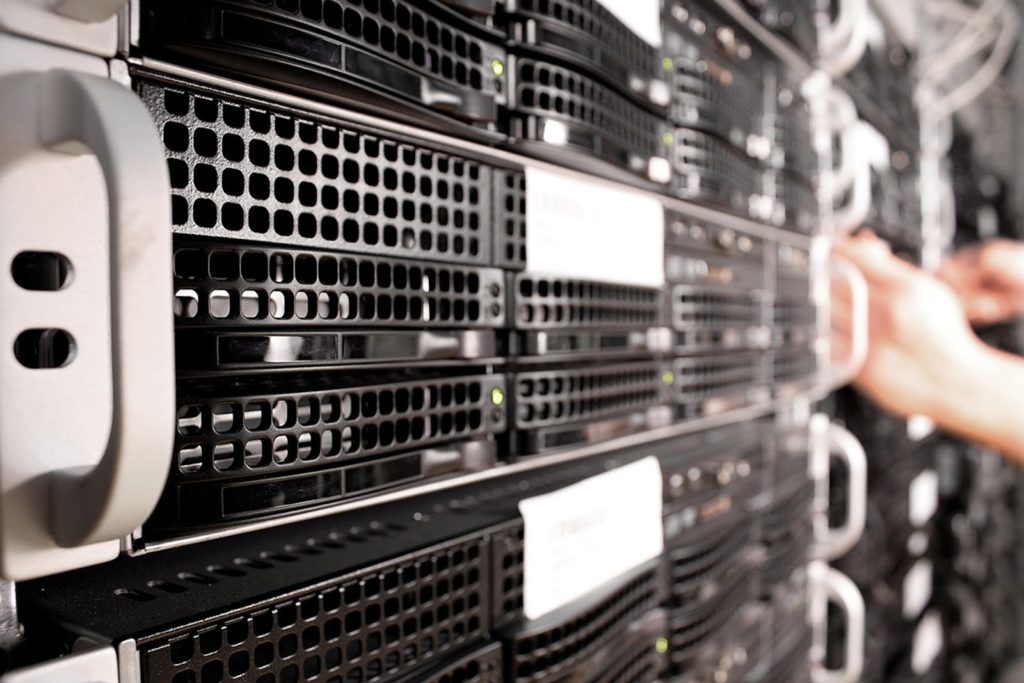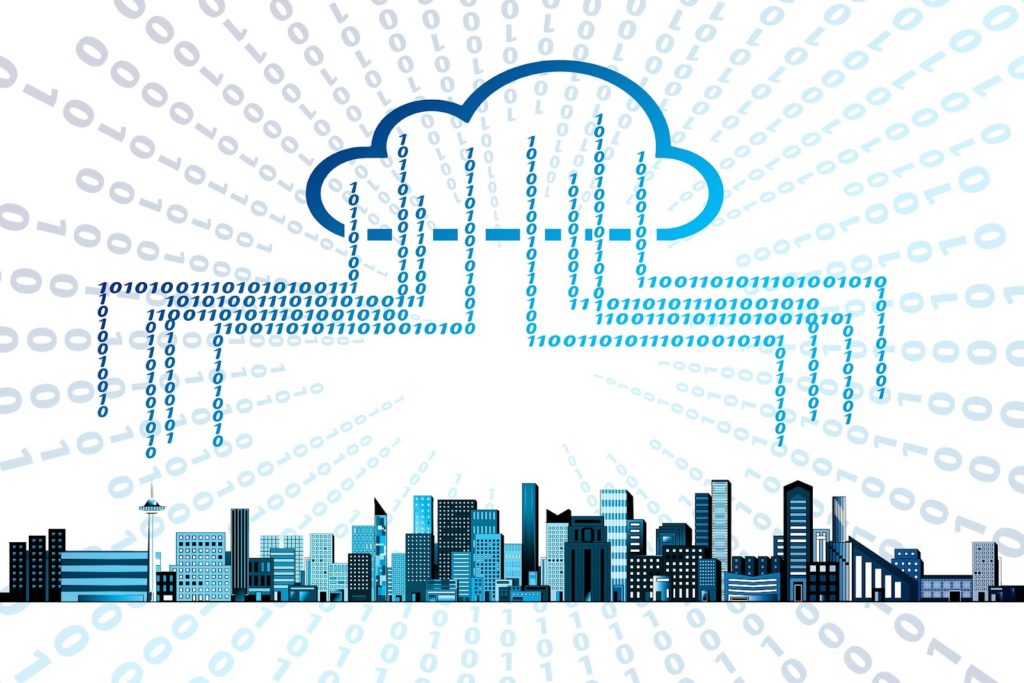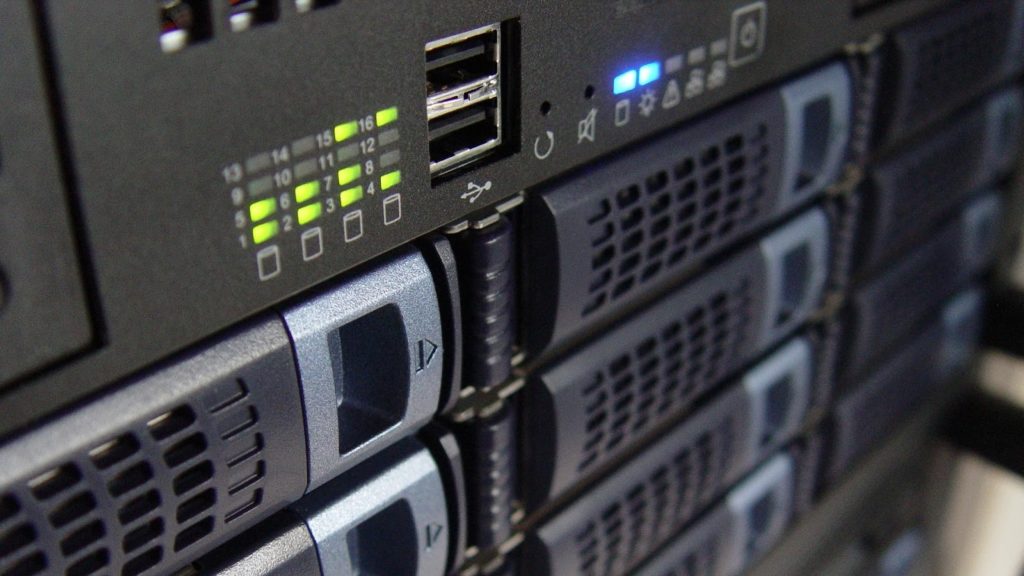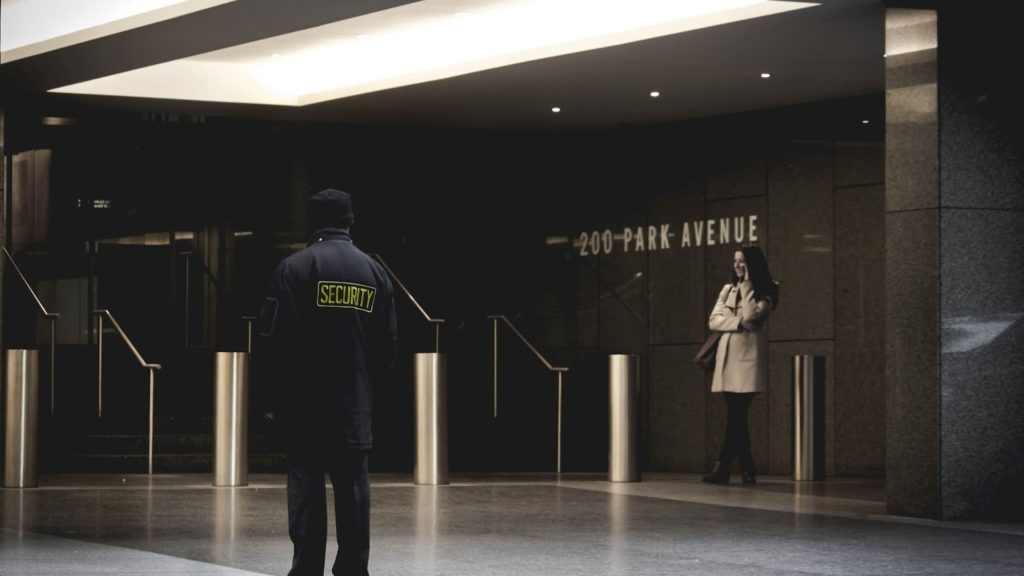
Using the cloud in your business is undoubtedly beneficial for infrastructure, security, marketing, and deployment. Depending on your business needs, you’ll have to choose whether to use single-tenant or multi-tenant cloud architecture.
Single-tenant architecture is when a single client uses a dedicated cloud server. Conversely, multi-tenant cloud architecture is meant for multiple clients, all of whom share the same server segment.
Generally, cloud computing has 3 different server types:
- Public servers
- Private servers
- Hybrid servers
Private servers are usually known for single-tenancy and public ones for multi-tenancy. But that isn’t always the case. In some scenarios, you’d want to host multiple clients on a private server or would need dedicated servers on public cloud servers.
In this article, I’ll discuss what tenancy in cloud software architecture is. Then, I’ll go through the benefits and drawbacks of the two tenancy types.
What Is Tenancy in Software Architecture?
Tenancy in cloud computing refers to the number of clients on a single server. That said, it’s important to note that clients aren’t the same as users or contacts. Instead, clients are systems with a specific operating system and infrastructure.
Single-tenancy and multi-tenancy are the two options to consider here. Both tenancy types have multiple architecture variations. That said tenancy doesn’t relate to who’s using these clients or how the clients are set up in a hierarchy. It only relates to the number of clients.
Let me explain what single-tenancy is, how you can use it, and its drawbacks in the following section.
What Is Single-Tenancy?
Single-tenancy is a cloud architecture solution where only a single client is present on a cloud server. Generally, single-tenancy is simple, and that makes it desirable. That said, a single-tenancy solution can still have complex configurations.
Your single-tenant server can have multiple sub-categories. Most vendors will also let you choose how to customize the environment. For instance, the server can mimic the physical server you already have. Alternatively, it could be a completely new solution.
In many ways, a single-tenant cloud server operates the same as a physical server. It offers full control and is perfectly reliable. It also retains all the advantages of a cloud server when it comes to automation, security, and disaster recovery.
How Does Single-Tenancy Work?
Using single-tenancy cloud servers is very easy. In this setup, you only need one dedicated server. You can install and migrate your enterprise’s entire system onto the dedicated server. In some cases, companies will also form their cloud backups and use individual servers as cloud servers. That said, it’s often better and more effective to use cloud services like Azure or AWS.
In most ways, a single-tenant server operates the same way as a physical server once migrated. That’s because you can introduce the same hierarchy and topology you had on your old on-premise server.
If your company uses cloud services like Azure, you can also use automation tools like Exinda or Azure Automation to improve operations.
You’ll also have an option to have one instance of your server work on dedicated cloud hardware. Alternatively, you can have a dedicated host server where you can host multiple instances. Solutions like AWS provide you with the so-called ”elastic compute cloud”, often abbreviated as EC2. EC2 also allows multiple system instances to work on the same cloud server. That includes macOS, Linux, and Windows.
You’ll also need to check if the available cloud hardware would allow for all the systems and software you plan to use. You should also know if it’ll work identically to in-house solutions. This may increase the overall cost, but it’ll also provide complete control.

Benefits and Drawbacks of Single-Tenant Cloud Architecture
The benefits of single-tenant cloud architecture stem from its simplicity and level of control. This comes at a price, though. Let’s see below.
| Single-Tenancy Benefits | Single-Tenancy Drawbacks |
| Excellent security | Increased price of the server |
| Multiple compliance options | Relatively low hardware efficiency |
| Improved reliability | Increased maintenance cost |
| Easy disaster recovery and restoration | Inefficient resource usage |
| Quick migration | |
| Full control |
These benefits and drawbacks depend on how you’ve prepared your company for maintenance and cybersecurity. If you’ve already developed solutions for maintenance and cybersecurity, your security will be much better with a single-tenant architecture.
These drawbacks aren’t an issue for companies that already can’t externalize the cost of maintenance and security. That said, if you’re a new company working to reduce operating costs without a server structure, it might be a bit more than you can chew.
Next, I’ll go through what multi-tenancy is, how it works, and cover its benefits and drawbacks.
What Is Multi-Tenancy?
Multi-tenancy is when one server has more than one client. This type of architecture has overtaken single-tenancy in popularity, especially with the rise of online commerce and the mobile app market.
When it comes to multi-tenancy, the actual architecture solutions are far more complex than with single-tenancy. Despite being more complex, multi-tenancy solutions are pre-packaged through the user interface. This means they’re easy to use.
How Does Multi-Tenancy Work?
Large corporate cloud solutions like AWS or Microsoft Azure already have arrays of servers with solid hardware and top-notch security. If you’re only looking for one piece of a server that you don’t mind sharing with other customers, these cloud providers can also save some money.
This service allows these companies to cram more paying customers on a single server. It also allows easier hardware exchange since you can always move to a shared hardware set while the new one is installed.
With multi-tenancy, the infrastructure is already in place. It’s only waiting for you to rent out a single instance on the server. While you’ll also need space for the operating system or other parameters, the final size you can take on the server can be very small.
This option is very popular with mobile apps since it’s easy to automate the cloud to allow automatic app deployment. Each instance usually only needs less than a gigabyte to operate.
Thus, you’ll receive your space, the tools to upload what you need, and ways to operate without impediments. That said, you’ll never have complete control over the server, and you only can work within predetermined parameters.

Benefits and Drawbacks of Multi-Tenant Cloud Architecture
Multi-tenant cloud architecture has several benefits. That said, most of its drawbacks stem from the lack of control.
| Multi-Tenancy Benefits | Multi-Tenancy Drawbacks |
| High hardware efficiency | System-operated security only |
| Low operating cost | Absent industry compliance capability |
| Ease of access | Low selection of third-party apps |
| Fast software deployment | Absent infrastructure-level control |
| Vendor-operated maintenance |
For the clients, paying the subscription and accessing the cloud space is very easy. Cloud server companies also offer Infrastructure as a Service (IaaS). This makes it much easier to get onboarded and start using the benefits of cloud computing right away.
Before I compare single-tenant and multi-tenant architecture head to head, I’ll first explain the cost per customer in these architectures.
Understanding Cost per Customer in a Single-Tenant and Multi-Tenant Architecture
A client, or user, is the entity accessing the cloud server. The customer is the entity paying for the service. As most will figure out, more than one company can pay for a single service. And this is the basis of multi-tenancy in the first place. That said, more than one company can pay for multiple clients simultaneously.
To calculate your cost per customer when using multi-tenant architecture, you’ll need to find out 4 numbers:
- Cost per server instance
- Number of instances
- Cost of deployment
- Cost of bandwidth
Server instances and bandwidth are the easiest to calculate. That’s because they’ll be cited in the quote by cloud services operators like AWS or Azure. Note that the quote will often depend on the number of instances you need.
The rest will depend on your needs and the capability of your company to develop and deploy software. If that’s not a part of your business, you’ll need to purchase it as a service.
Single-Tenant vs Multi-Tenant Architectures
A single-tenant architecture is always superior if you need security and control and have the money and staffing to operate it. But if you want something quick, cheap, and effective, multi-tenant options are better.
In most cases, you can use the below table to choose the solution that best fits your business:
| Issue | Single-Tenant | Multi-Tenant |
| Company size | Large companies with over 250 users | Small to medium with up to 250 users |
| Company type | High capital, stable growth | Low capital, high growth |
| Requirements | Mission-critical and security-dependent enterprise | Resource-intensive agile enterprise |
| Hardware requirements | Homogenous | Heterogeneous |
| Scale | Stable resource requirements | Changing resource requirements |
| Security | Optimized security | Standardized security |
| Compliance | Industry-specific compliance | Standard cloud compliance |
| Cost | High cost with cost of ownership | Low cost |
| Customization | Full customization | Limited customization |
| Maintenance | Managed by operator | Managed by vendor |
| Use | Customizable for specific demands | Adaptable for a wide pool of users |
You can see which group you belong to and select that solution using the above table. That said, these standard rules don’t always apply. Let’s learn more about this next!
What to Consider When Choosing between Single-Tenancy and Multi-Tenancy
Some scenarios might require a solution that isn’t clear-cut. In that case, you’ll need to consider several aspects before picking a solution:
- Projected growth
- Possible migrations
- Automation requirement
- Cybercrime targeting
Many companies might benefit more from multi-tenancy in the short run. That said, they’d need to move to multi-tenancy later, but the process will be difficult.
Fintech companies are one of the prime examples of this scenario. They usually don’t have a lot of employees, so their customers rarely need a separate instance on the cloud server. That said, the security, compliance, and targeting factors make multi-tenancy an issue for these companies.
Similarly, some companies might only have a few clients now, but will need to migrate to single-tenancy after successfully entering the market. In these cases, migrating from a multi-tenant server to a single-tenant server will be extremely arduous.
If you notice that you fall into one of these categories, it’s best to invest in a senior cloud engineer. You can also ask your cloud software supplier to explain your options for the future.

When to Use Single-tenant and Multi-Tenant Architecture?
Single-tenancy cloud architecture is a better solution for two types of companies; those that are very large and/or require comprehensive security. You also need to consider industry-specific compliance, which should be a part of your cybersecurity initiatives.
Having a dedicated server is always the best option for a large company that needs many instances regardless of their customers.
Conversely, app development startups are the most common example of companies that would fare much better with multi-tenant architecture. Security is rarely a huge issue, especially in the beginning. Thus, retaining agility and reducing costs with a multi-tenant option is much better.
Whether you need a separate instance for each customer or deployment and stability in different places, using the multi-tenant system will significantly reduce your costs and prime the product for the market much faster.
Pro Tips
Use single-tenancy if you:
- Have a large company
- Need extra security
- Require industry compliance
- Need total control
Use multi-tenancy if you:
- Run a startup or a small business
- Need to scale down costs
- Need quick external deployment
- Don’t host a lot of data

Final Words
Single-tenant and multi-tenant cloud architecture solutions have advantages and drawbacks. You should consider a variety of factors when choosing which options best apply to your business. Your company’s size and business requirements are two important factors to consider. Single-tenancy is mostly for large companies with higher security concerns. Despite the higher cost, it provides many benefits for these companies, like a higher level of control.
Multi-tenancy is for smaller enterprises with less need for security. This architecture is also more agile and can scale up or down with the requirements of the business, thus optimizing the costs.
The choice between single-tenancy and multi-tenancy might differ in some scenarios. Luckily, you’ll find an explanation to help you set your mind on the best choice out of the two for your company.
Have more questions about single-tenancy and multi-tenancy cloud architecture? Check out the FAQ and Resources sections below!
FAQ
Is multi-tenancy necessary for app deployment?
No. App deployment isn’t strictly connected to the type of architecture you would use. Some multi-tenant cloud architecture solutions would provide native tools for this deployment. That said, some applications, like the Azure App Services, allow easy implemented deployment in either a single-tenant or a multi-tenant cloud server.
Are single-tenant cloud servers faster than multi-tenant?
Multi-tenant cloud architecture is better optimized than a single-tenant solution. This quality makes it frequently appear faster in both processing and bandwidth. That said, it’s not faster by default. Dedicated proxy servers also can have just as much power.
Is a multi-tenant cloud server scalable?
Multi-tenant cloud architecture is scalable to a point. The number of instances and geography of the servers are scalable components. In some situations, cloud scalability will be easier with single-tenancy due to the increased control.
What cybersecurity is available with multi-tenant cloud servers?
Large cloud computing vendors like Microsoft and Amazon host some of the safest servers in the world. They also offer high cloud security standards that would be sufficient for most businesses. That said, it’s very hard to implement your security options in a multi-tenant cloud solution. Additionally, most vendors won’t have these options at all.
What compliance does AWS offer?
Amazon Web Services offer a wide array of standardized compliances like the ISO 9001 and the ISO 22301. It also offers financial compliance standards like the SOC1 and the PCI DSS Level 1. That said, they don’t have any options for industry-specific compliances like healthcare or car registration.
Resources
TechGenix: Article on Cloud Security Standards
Learn about cloud security standards and frameworks and how to apply them to your business.
TechGenix: Article on Cloud Security Certification
Discover the best cloud security certification schemes that can greatly assist your career.
TechGenix: Article on Cloud Automation
Explore the extents and benefits of cloud automation in the first part of a 3-part guide.
TechGenix: Article on Attack Vectors
Learn about attack vectors and how to prevent them.
TechGenix: Article on HIPAA-Compliant Cloud Storage Services
Find out the top 5 HIPAA-compliant cloud storage services and their benefits.



